Let’s fill our garden with beauty and our children with wonder by growing sunflowers! Here’s a guide on how to get started growing sunflowers with children, plus extra resources for sunflower lesson plans and learning guides.
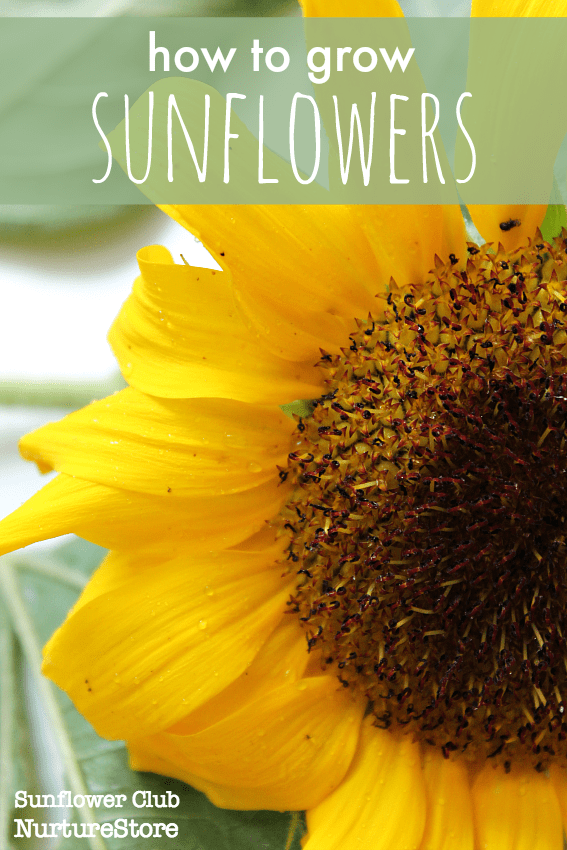
How to grow sunflowers with children
Click here to download your copy of the Sunflower School curriculum and printables.
Sunflowers are one of my favourite plants to grow with children. They’re beautiful, easy to grow, and their height and quick growth is fun for children to watch. Sunflowers are also a favourite of bees and so make an important addition to an eco-garden.
Sunflowers are annuals, which means they complete their whole life cycle, from germination to seed production, in the space of one year. This makes them an excellent choice to grow with children, as they get to experience the full cycle of life. Sunflowers grow quickly, so there’s always something new to see, and children can be directly involved in planting, potting on, tending, and harvesting their plants.
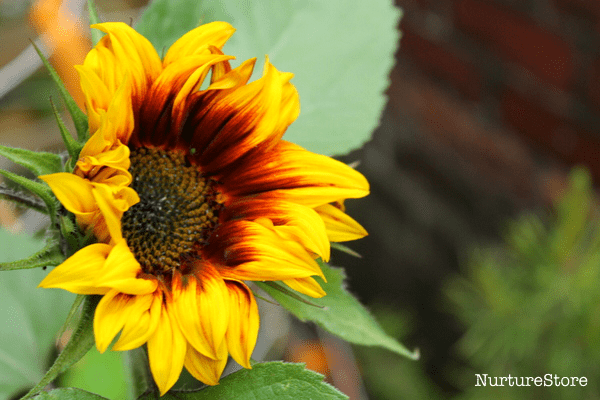
Which variety of sunflowers to grow with children
There are many different size and colour varieties you can choose from: from dwarf plants to giants, and from the classic yellow to choices with dark brown and purple markings.
It’s up to you which one you’d like to grow but I think every child should experience growing a giant! It’s so fun for children to see a tiny seed transform into a tall, tall plant that towers above their heads.
We always grow a variety called Russian Giant, or giant single, which you can readily find in garden centres or from online seed suppliers.
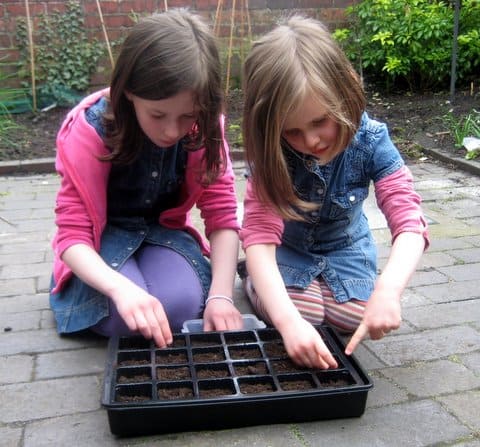
How to plant sunflower seeds
Start your seeds off in the early spring. They’re hardy plants which means they can be planted straight outdoors, but they are very tasty to slugs and snails, so I’d recommend starting them in pots and planting them out when their tender, juicy stems being to turn a little sturdier – a few weeks after planting.
Fill little plant pots with compost and plant two or three seeds in each pot. Cover with a little extra compost and water them.
Place them on a window sill, in a greenhouse, or outdoors and keep watering a little everyday or so. You should see the seedlings appear in about a week.
When your seedlings are around 10-15cm tall, and with a stem that’s beginning to look a little sturdier, you can re-plant them out doors.
Choose the strongest looking plant from each pot and plant it out in a sunny spot. You can plant them in pots or garden containers, but tall varieties especially can get quiet top-heavy and topple, so open soil is preferable. You can use a garden cane to give them extra support if you’re in a windy area or you’re plants are getting very tall.
Water them daily for the first few days to encourage them to grow their roots out in to the surrounding soil. Plants in pots will continue to need regular watering, plants in open soil will need watering if it doesn’t rain.
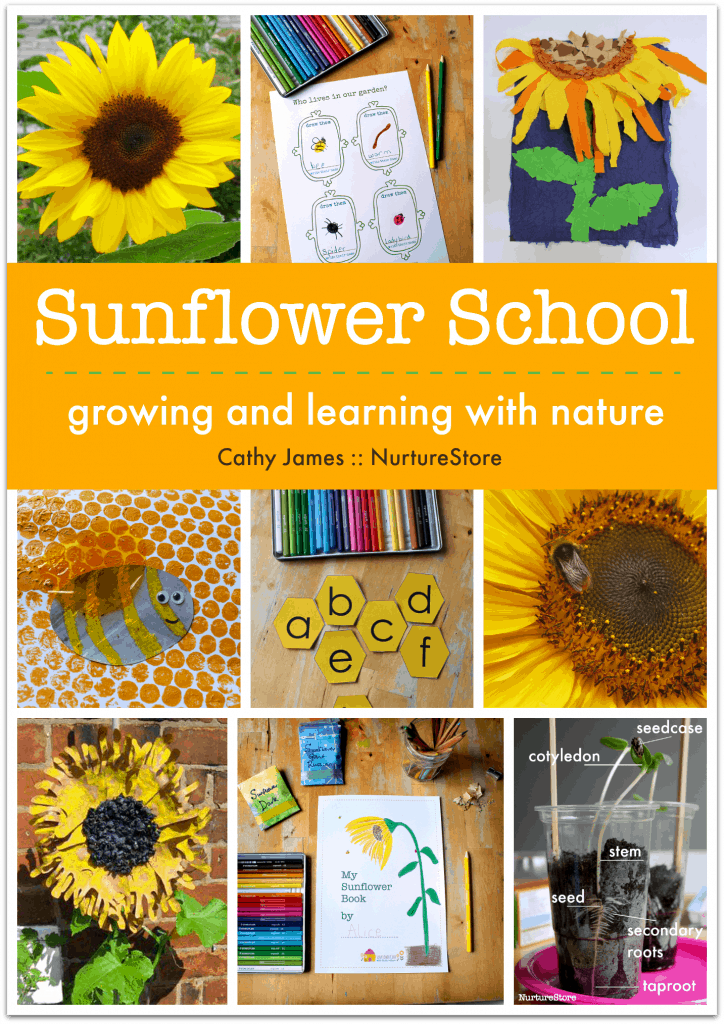
Sunflower School curriculum and printables
Click here to download your copy of the Sunflower School curriculum.
The Sunflower School curriculum matches a full programme of learning to the natural growing cycle of sunflowers.
It gives you six units of learning:
:: In the spring we’ll focus on planting and watching our plants grow.
:: In the summer we’ll learn about bees and pollination, and celebrate the gorgeous blooms through art.
:: In the late summer and early autumn we’ll turn our attention to harvesting, sustainability, and closing of the growing year.
Bonus sunflower printables
Our Sunflower School curriculum comes with 30 pages of bonus printables that you can use with your children to enrich their learning, including:
- My Sunflower Journal printable
- Lined, plain, and half-and-half journal pages
- Sunflower poems printable
- Sunflower sticker sheet
- Printable plant labels
- Sunflower counting mat
- Sunflower addition mat
- Sunflower subtraction mat
- Sunflower word mats
- Bee number cards
- Bee writing and scissor skills pages
- Garden Creatures page
- Honeycomb alphabet
- Printable seed packets
Click here to download the complete set of Sunflower School resources.


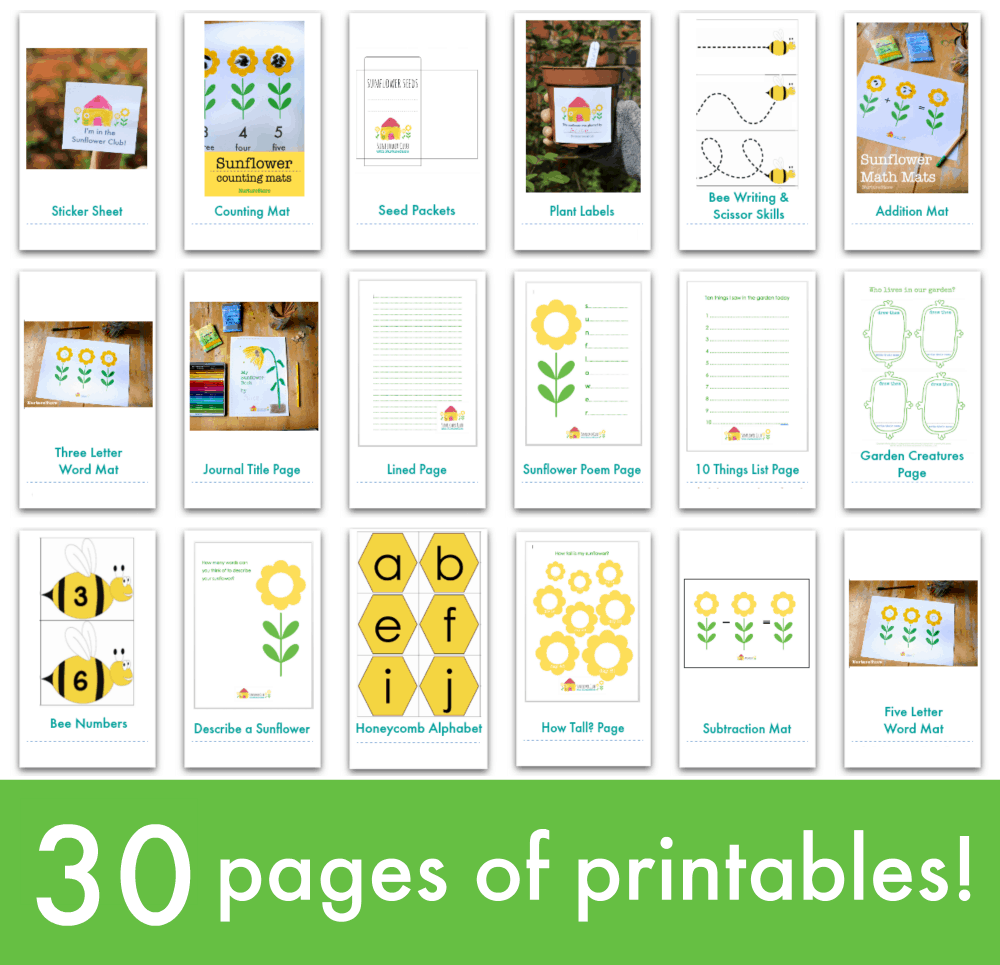

This is inspiring!! I can see that these little accordion booklets could have so many uses in so many projects!
Yes, we love them. We’ve used them for cartoon books too, and there’s a rainbow version on the homepage today too.
I love the zig zag books. Fabulous idea, will be adapting for our Tadpoles this year.
I love this so much and coming from the Caribbean constraints and resources makes learning like this a bit of a challenge but I am definitely trying this with my kids thank you so much for sharing.
There is a fabulous book called Grace’s Mystery Seed. It is the perfect story to go with this whole idea.